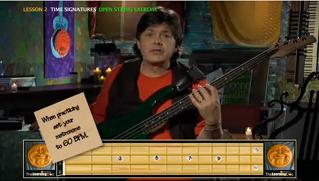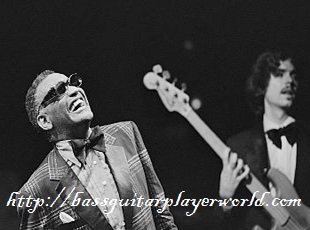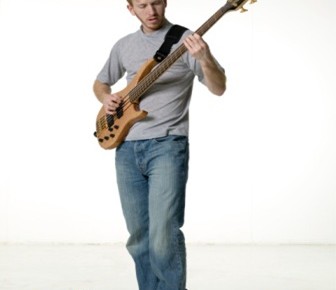Augmented Arpeggios Masterclass to Help You Apply Them
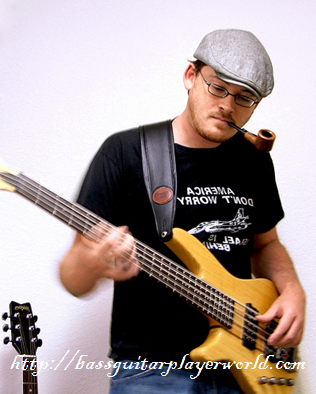 Since the most common learning curve chosen by bass guitarists – that of home-learning – does not involve a substantial study of music theory, some of the basic concepts are often misunderstood. Augmented arpeggios or even just arpeggios in general are one of these concepts.
Since the most common learning curve chosen by bass guitarists – that of home-learning – does not involve a substantial study of music theory, some of the basic concepts are often misunderstood. Augmented arpeggios or even just arpeggios in general are one of these concepts.
I am pretty sure that the majority of bass players have played augmented arpeggios in their lives already, possibly without the slightest understanding of what they are doing. Realizing that arpeggios are probably the most common way of playing chords out on a bass guitar and realizing that you have been already playing them for a while might be quite useful when it comes to developing your skills further.
How so? Understanding the theory behind arpeggios will open your way towards playing them in a whole range of different new ways.
What Exactly is an Arpeggio?
Basically speaking, an arpeggio is the spreading of a chord into notes played in sequence, one by one. The word arpeggio is semantically related to the word harp – probably because harpists usually dissociate the notes of a chord and play them individually. Even though many people tend to believe that arpeggios are something that only guitarists need, actually the concept behind arpeggios is quite generic and is used by almost every musician: including bassists.
In the example below you can see some examples for simple major arpeggios. In these simple arpeggios there are only three different notes involved, so you will soon notice that you are playing the same notes, even if you have skipped an octave.
Arpeggios do not have to stay encapsulated in the initial chord, as that can be transposed and moved on the neck of the bass. The example below also shows some tricks when it comes to extending the range that you play in.
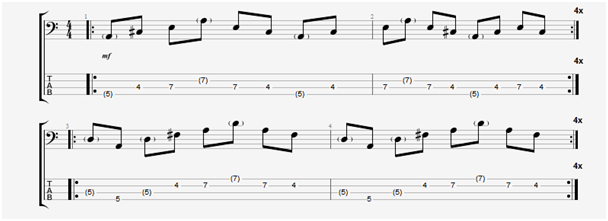
Download the .gtp file for the lesson ( Right click and Save As… )
If you do not have GuitarPro yet, download a copy of Guitar Pro instantly here…
How Are Augmented Chords Constructed?
An augmented chord – or more precisely: an augmented triad – is a chord consisting of a root note and two major thirds. Such a chord is called “augmented” because in comparison with the root note’s major chord, the top note of the augmented triad is raised.
That is, when a major chord contains a major third and a minor third (for example the succession from C through E to G), the augmented triad sharpens the fifth interval between C and G to an augmented fifth by raising the top note a half step. That is, an augmented chord with C as root note might look like this: C-E-G#.
The notation for augmented chords is also pretty simple. For example, the above C-E-G# succession can be denoted as Caug or C+.
So, How Do You Play Them?
The logic behind augmented arpeggios is rather simple, really. You just have to add together what we have just learned about arpeggios in general and also augmented chords. Basically, augmented arpeggios are augmented chords with their notes being played sequentially.
An important characteristic of arpeggios in general is that they are movable across the neck of the bass guitar. Another important fact to mention is that augmented arpeggios are symmetrical (some other arpeggios might also be symmetrical, but that is not sure).
In the example below you can find a rather simple and also a bit more complex example of how an augmented arpeggio can be played.
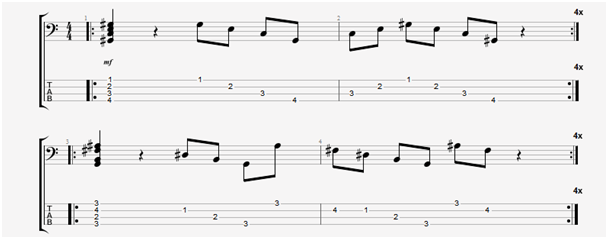
Download the .gtp file for the lesson ( Right click and Save As… )
Get The Freedom To Learn What You Want Anytime, Anywhere
JamPlay gives you the best of both worlds by offering highly structured curricula and a variety of teachers each covering various musical styles for you to learn from. Their video lesson quality is phenomenal and showcases more than 5 different camera angles!
With lessons taught by renowned players like Billy Sheehan, you can now see the exact finger placements and mimic techniques used by the legends themselves.
Related Articles
Comments are closed.

